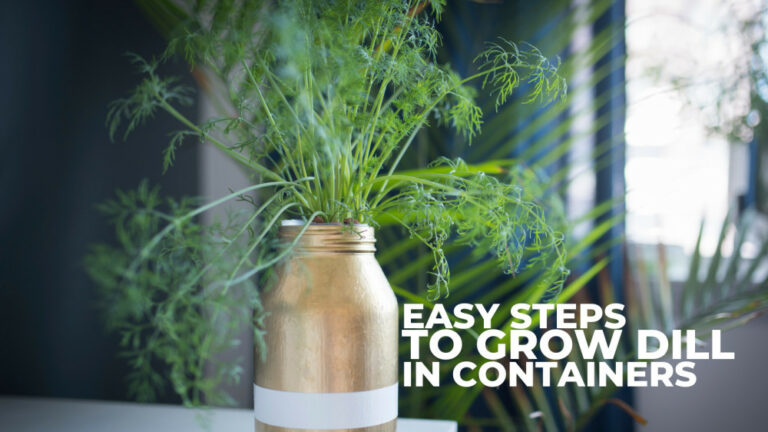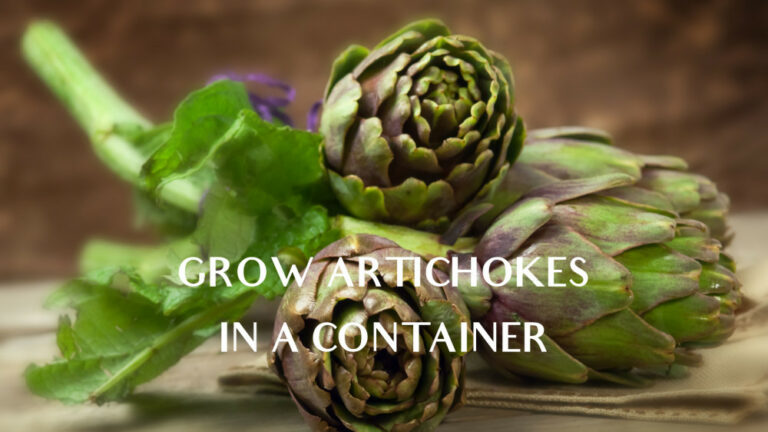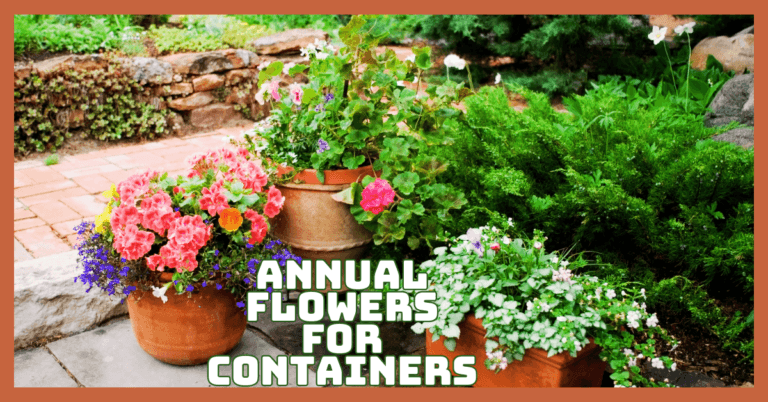Best Tips To Grow Asafoetida In Containers
Best Tips To Grow Asafoetida In Containers
Growing Asafoetida (Ferula asafoetida), a revered spice in culinary and medicinal traditions, particularly in Indian cuisine, offers a unique gardening adventure for those looking to expand their herb and spice collection.
Asafoetida, also known as “hing,” is derived from the sap of the Ferula plants and is celebrated for its distinct flavour and digestive benefits.
Cultivating Asafoetida in containers provides a unique opportunity to grow this esteemed spice, known for its distinctive taste and health benefits, right in your own space, regardless of gardening limitations.
This guide empowers enthusiasts to grow Asafoetida in containers, covering everything from soil mix to sunlight, ensuring even beginners can enjoy its exotic flavour and health benefits at home.
With patience and the right care, even novice gardeners can grow Asafoetida at home, adding a touch of exotic flavour to their culinary endeavours and benefiting from its traditional health properties.
What Does Asafetida Mean?
Asafoetida, commonly spelled “asafetida” and known as “hing” in many parts of South Asia, is a resin obtained from the sap of the roots and stems of various species of Ferula, a genus of herbaceous plants.
Extracting asafoetida involves incisions in the plant's roots or stem, from which a milky juice exudes.
This juice hardens upon exposure to air, forming a solid, resinous mass with a texture and appearance similar to amber.
Asafoetida is renowned for its pungent, sulfuric smell, often compared to the aroma of leeks, garlic, or cooked onions. It has earned nicknames such as “devil's dung.”
However, when cooked, it imparts a smooth, savoury flavour that enhances various dishes, particularly in Indian, Iranian, and Afghan cuisines, where it's used as a condiment and flavouring agent.
Beyond its culinary applications, asafoetida boasts a rich history of use in traditional medicine across various cultures.
It has many health benefits, including digestive aid, relieving flatulence, and acting as a natural remedy for respiratory ailments like asthma and bronchitis.
Since ancient times, its antiviral and anti-inflammatory qualities have also made it a valued component of traditional therapies.
Despite its somewhat off-putting raw smell, asafoetida's transformative flavour and health benefits have become a staple in spice cabinets and traditional medicine chests.
History Of Asafetida
Asafoetida, a spice with a storied history, has been used for thousands of years in the ancient civilizations of Iran and Afghanistan.
Its name is derived from the Persian word “aza” (resin) and the Latin “foetida” (stinking), reflecting its pungent odour.
This spice, known as “hing” in India, was introduced to the Indian subcontinent by the Moghuls, who used it not only as a flavouring agent but also for its medicinal properties.
Asafoetida was well-regarded in ancient Rome, where it was employed in cooking and as a remedy for various ailments.
Its intense aroma, akin to garlic's, made it a valuable substitute in cultures and religions where garlic was avoided.
Trading asafoetida along the Silk Road helped spread its use to the Middle East and Europe. It was believed to ward off spirits in medieval times and was used in charms and talismans.
Its medical application was documented in the writings of physicians like Avicenna and Dioscorides, who praised its benefits in treating digestive issues, respiratory conditions, and nervous disorders.
In the 19th century, asafoetida made its way to the United States, where it was used in patent medicines.
Despite its widespread historical use, asafoetida remained relatively unknown in many Western cuisines due to its strong odour.
However, its popularity has grown recently, especially among vegetarians and those with dietary restrictions, as a flavour enhancer and a substitute for onions and garlic.
Today, asafoetida remains a vital ingredient in traditional dishes across Iran, India, and beyond, cherished for its unique flavour and healthful properties.
Best Time To Plant Asafoetida
Early spring to early summer, when the risk of frost has gone, and the soil has warmed up, is the ideal time to sow Asafoetida (Ferula asafoetida) seeds or seedlings.
This period is important because Asafoetida is a perennial plant native to the mountains of Afghanistan and the deserts of Iran.
It thrives in warm, dry circumstances similar to those found in its original home. Planting during this period allows the Asafoetida plant to establish itself and take advantage of the warmer growing season, ensuring a robust root system before the cooler temperatures arrive.
For optimal growth, the plant prefers long, hot summers, with temperatures ranging between 20°C and 30°C (68°F and 86°F).
Since Asafoetida grows best in dry conditions, it's also important to consider your area's rainfall patterns when planning your planting.
In regions with wet summers, ensuring proper drainage and even considering raised beds or containers might be necessary to mimic the dry conditions it prefers.
Asafoetida plants are typically slow to mature, requiring about four to five years from planting to produce the resin used as the spice, so patience is essential.
This extended growth period makes the timing of planting even more crucial, as getting the plants in the ground at the right time maximizes their growth potential over the years.
By aligning the planting time with Asafoetida's natural growth cycle, gardeners can cultivate this ancient and valued spice more successfully and fruitfully.
Tips To Grow Asafoetida In Containers
Growing Asafoetida (Ferula asafoetida) in containers is a feasible and rewarding endeavour, especially for those in cooler climates or with limited gardening space.
Here are some tips to ensure success when cultivating this aromatic spice:

1. Choose the Right Container To Grow Asafoetida
Due to the deep-rooted nature of Asafoetida, a spice revered in culinary and medicinal circles, the choice of container is paramount when cultivating it.
Opting for a container that measures at least 12-18 inches in depth and width is essential to accommodate the extensive root system that Asafoetida develops.
This depth ensures the roots have ample space to grow downward and outward, mimicking their natural growth pattern in the wild.
A spacious container facilitates robust root development and promotes overall plant health by allowing for better soil aeration and moisture retention.
The selected container must include enough drainage holes to prevent water from collecting at the bottom, which could cause root rot and other moisture-related problems.
Furthermore, a well-sized container will support the plant's above-ground growth, providing a stable foundation for the foliage and eventual flower stalks.
Selecting the appropriate container is a critical first step in creating an optimal growing environment for Asafoetida, setting the stage for a successful harvest of this unique and aromatic resin.
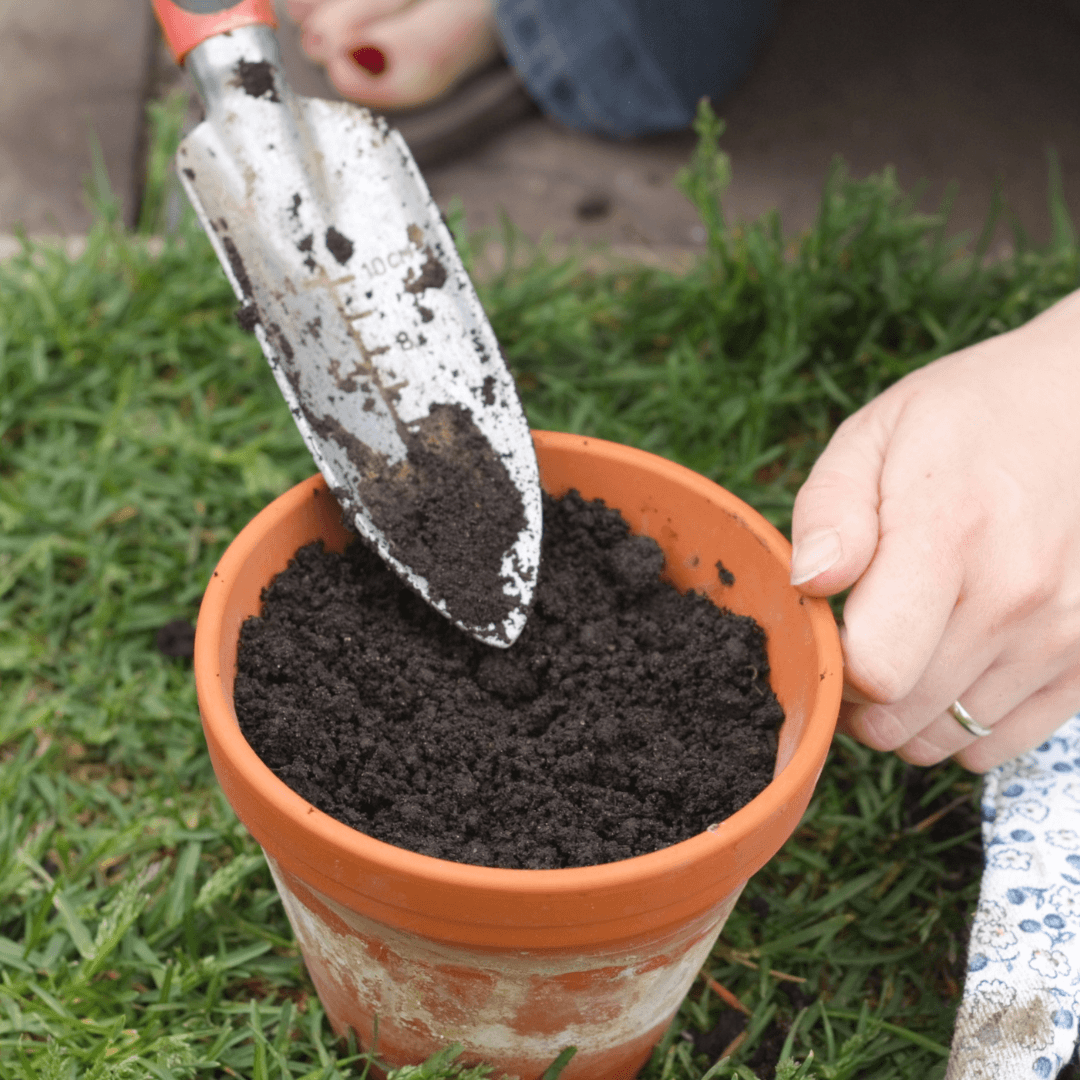
2. Soil Selection To Grow Asafoetida In Containers
The foundation of successful Asafoetida cultivation lies in selecting the appropriate soil type, which is pivotal in simulating the plant's native growing conditions.
To successfully grow Asafoetida in containers, a well-draining, sandy loam soil mix that mimics its native desert conditions is essential.
Gardeners must prepare a custom soil mix to recreate this environment within a container. This can be achieved by blending standard garden soil with sand in equal proportions and enriching the mixture with a small amount of compost to introduce organic matter.
Adding sand improves the soil's drainage capabilities, preventing water retention around the roots.
At the same time, the compost offers a slow-release source of nutrients, supporting the plant's growth and health.
It is also crucial to monitor and adjust the soil pH to ensure it remains neutral to slightly alkaline, mirroring the alkaline soils found in Asafoetida's natural desert habitat.
This careful soil preparation fosters the development of a strong root system. It promotes the vigorous growth necessary for producing the plant's valued resin, setting the stage for a prosperous cultivation journey.
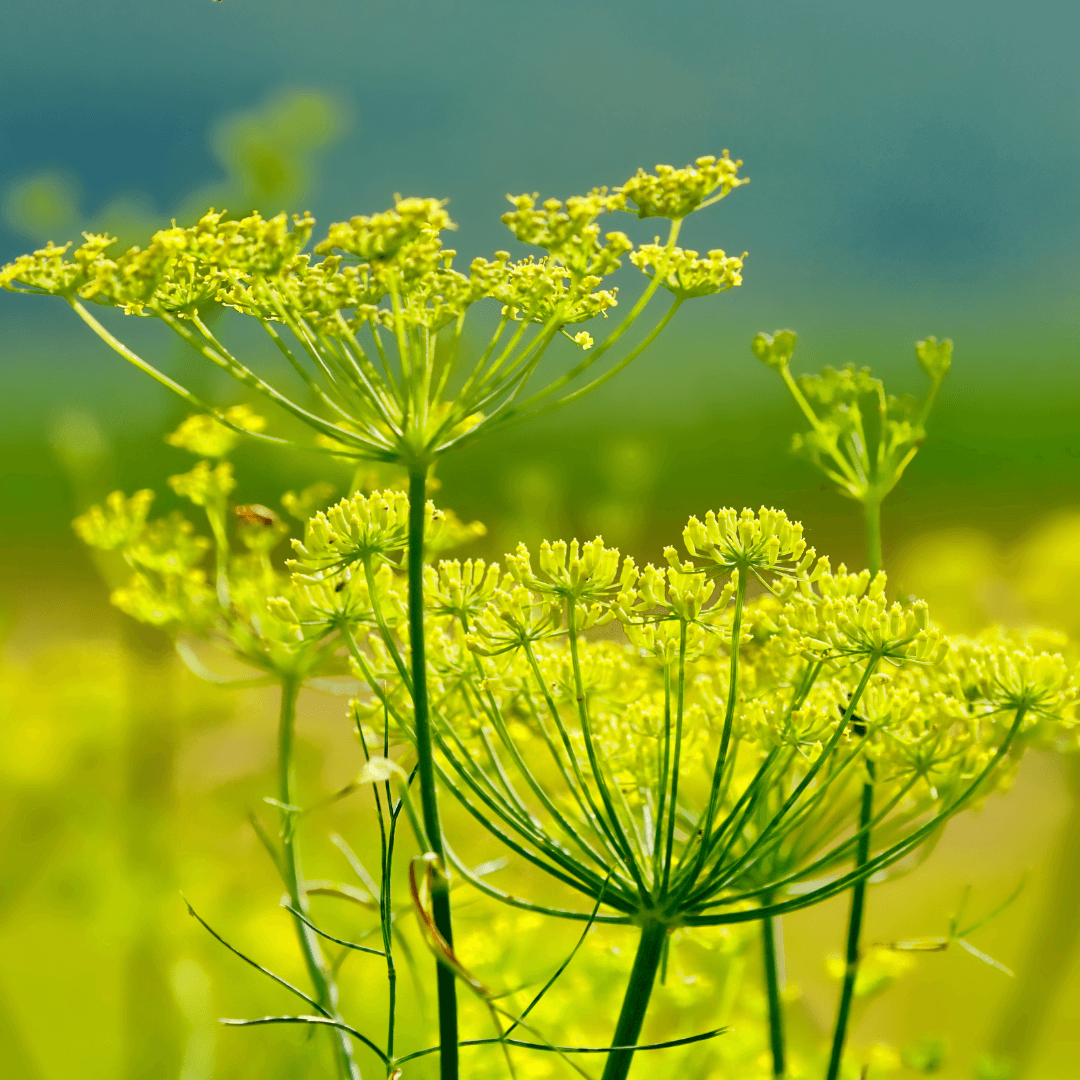
3. Sunlight Requirements To Grow Asafoetida
For Asafoetida to flourish, mimicking its native environment's intense sunlight exposure is essential.
This aromatic plant, native to the sun-drenched landscapes of Iran and Afghanistan, requires full sun for optimal growth.
To grow Asafoetida in containers successfully, ensure the plant receives six to eight hours of direct sunlight daily, reflecting its native habitat's bright, sun-drenched conditions.
For Asafoetida to grow and produce resin, it needs a lot of sunshine. Photosynthesis transforms light energy into chemical energy, which is why it requires photosynthesis.
The plant's need for bright light indicates its desert heritage, where the sun's relentless intensity governs the rhythm of life.
In cooler or cloudier climates, achieving this level of sunlight might necessitate using a sunny south-facing window or supplemental lighting with grow lights.
This strategic placement ensures that Asafoetida receives the energy it needs to thrive, closely resembling the natural conditions of its desert origins.
Gardeners can encourage healthy growth by providing sufficient sunlight, leading to a successful harvest of this valued spice.
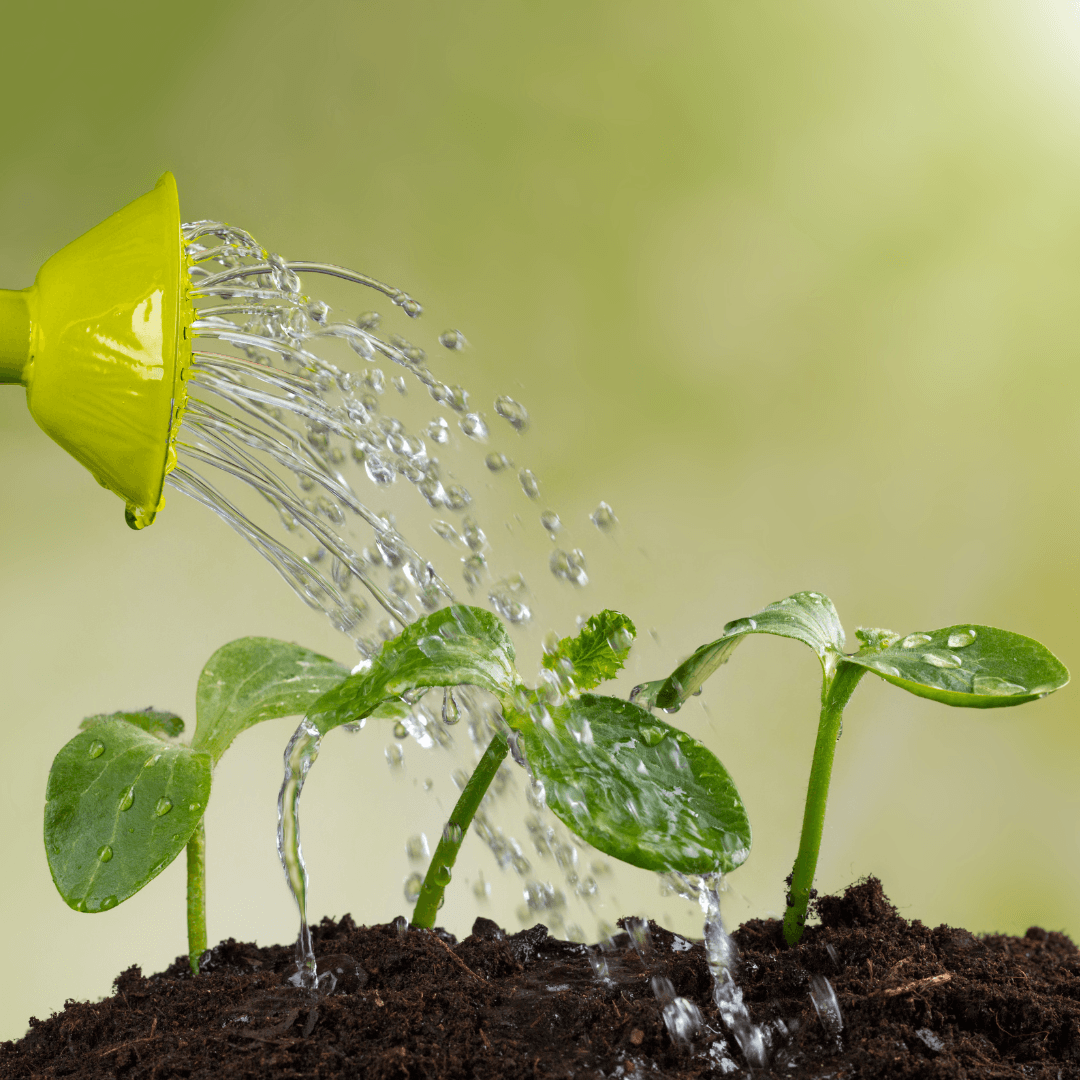
4. Watering Asafoetida Plants
Proper watering is critical for cultivating Asafoetida, especially when grown in containers. This plant prefers a moderate watering approach, reflecting its desert origin, where water is scarce.
Gardeners can balance the ecosystem by letting the soil dry out between waterings. This technique strengthens the plant by encouraging deeper root growth for moisture.
However, care must be taken to avoid overwatering, as Asafoetida's roots are particularly susceptible to root rot in soggy conditions.
Ensuring that the container has adequate drainage holes is therefore crucial, as it allows excess water to escape, preventing moisture accumulation around the roots.
This mimics the natural drainage in the plant's native habitat and promotes healthy root development.
Observing the soil's moisture level before watering can help prevent overwatering; the soil should feel dry to the touch an inch below the surface.
By adhering to these watering guidelines, gardeners can create an optimal growing environment for Asafoetida, fostering a healthy plant capable of producing valuable resin.
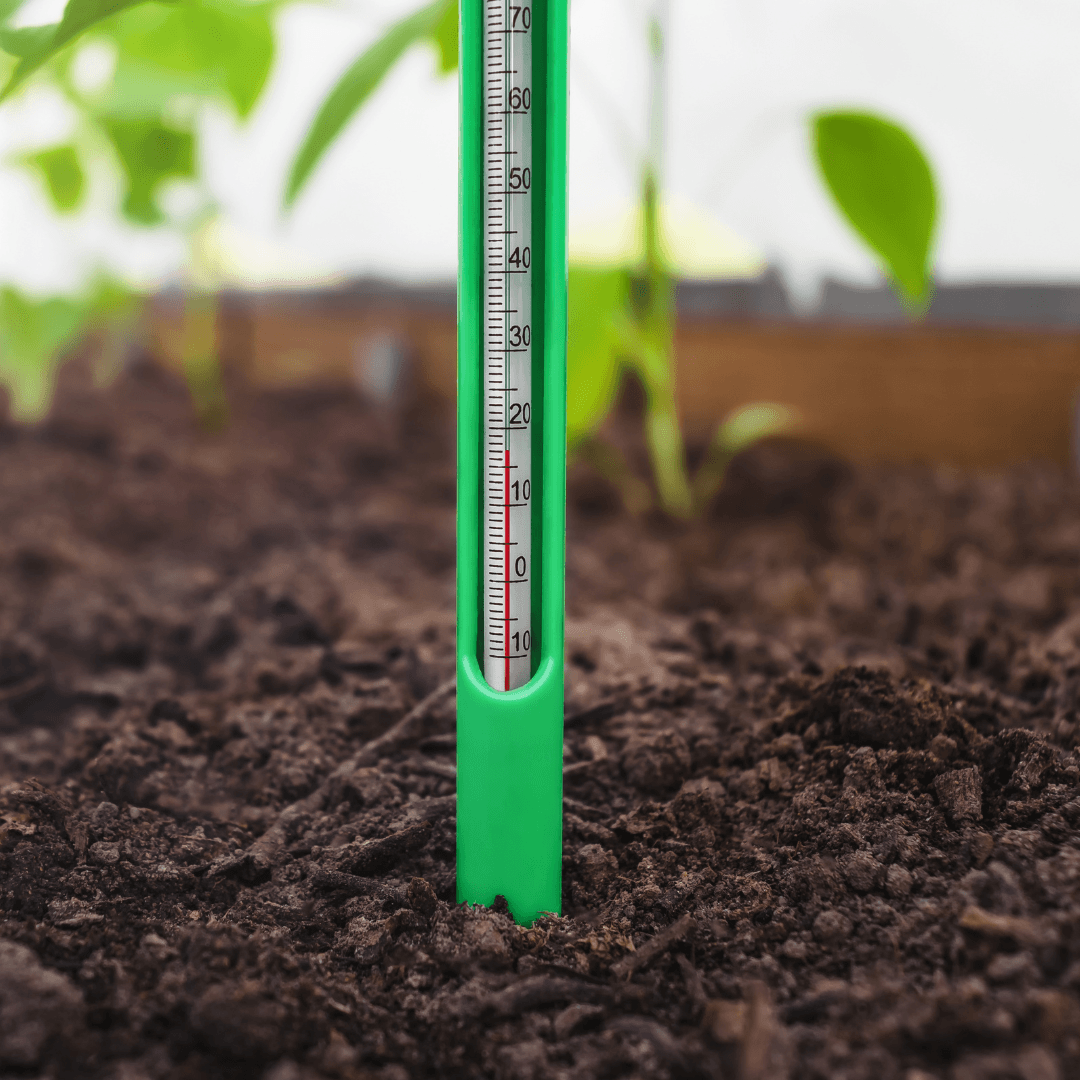
5. Temperature And Climate To Grow Asafoetida
Asafoetida's preference for warm temperatures reflects its native desert habitat, which has a predominantly hot and dry climate.
This warmth-loving plant thrives in conditions that closely mimic the high temperatures of the Iranian and Afghan deserts.
To grow Asafoetida effectively in containers, especially in cooler climates, it may be necessary to move the containers indoors to provide warm temperatures akin to its native desert environment.
Moving the container indoors, where temperatures are more controlled, may be necessary to ensure the plant's survival and continued growth. A sunny windowsill with ample sunlight provided the essential warmth and light.
Alternatively, employing a greenhouse for cultivation offers another viable solution, as it can create a microclimate that simulates warmer conditions, protecting the plant from cold shocks and frost damage.
Utilizing these strategies allows gardeners to extend the growing season for Asafoetida, ensuring the plant receives the warm temperatures it needs to thrive.
By carefully managing the temperature and climate, even those in less-than-ideal environments can enjoy homegrown Asafoetida's unique flavours and medicinal benefits.
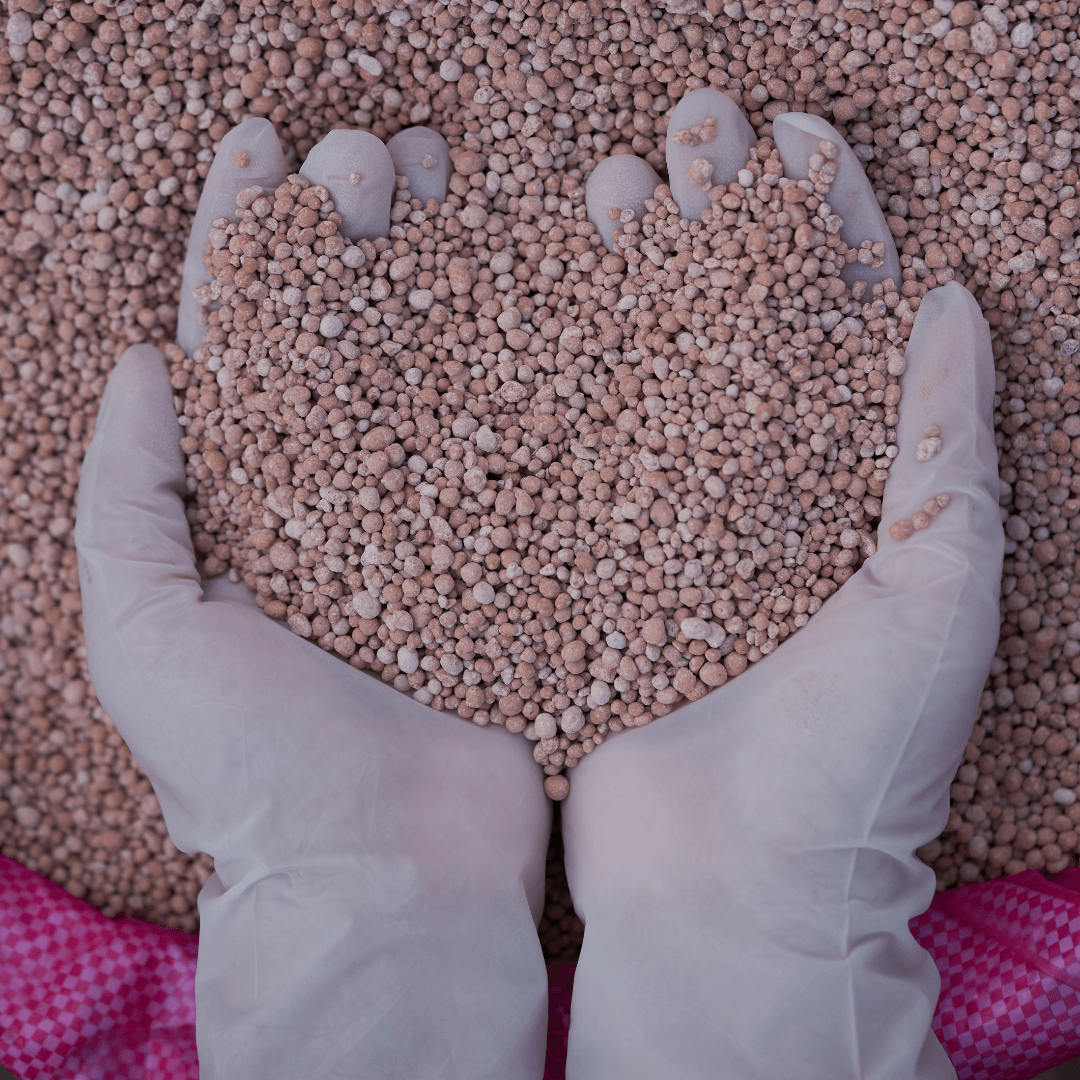
6. Fertilizing Asafoetida
A reasonable approach to fertilization is key to nurturing Asafoetida. This plant benefits from a minimalistic feeding regimen, underscoring its hardy nature and adaptability to the nutrient-sparse soils of its desert origins.
Introduce a balanced, slow-release fertilizer at the onset of the growing season to provide a steady supply of essential nutrients without overwhelming the plant.
This fertilizer gradually releases nutrients into the soil, mimicking the natural, slow enrichment process found in Asafoetida's native habitat.
Thus, it supports steady growth without the risk of nutrient burn or excessive foliage at the expense of resin production.
It’s important to remember that Asafoetida's nutrient requirement is modest; excessive fertilization can do more harm than good, weakening the plant, making it susceptible to diseases, and resulting in poor resin quality.
By fertilizing sparingly and choosing a product that ensures a slow and steady nutrient release, gardeners can maintain the delicate balance required for optimal growth, providing a healthy Asafoetida plant that thrives with minimal intervention.

7. Repotting Asafoetida Plants
As the Asafoetida plant matures, its growth extends beyond the foliage to a robust and expanding root system, necessitating eventual repotting to ensure continued health and vigour.
Repotting Asafoetida every few years is essential for those looking to grow Asafoetida in containers, as it provides the necessary space and fresh soil for its expanding root system and continued health.
Repotting is more than just a transfer to a larger container; it's an opportunity to invigorate the plant, addressing any root-bound issues that can restrict growth and affect the plant's ability to absorb water and nutrients effectively.
When choosing a new container, opt for one several inches larger in diameter than the current pot to ensure ample room for growth. During repotting, gently tease the roots to encourage them to spread out in their new environment.
Refreshing the soil with a well-draining, sandy loam mix, similar to the plant's native conditions, replenishes essential nutrients and improves soil structure, promoting healthy root development.
This practice is crucial for maintaining the overall health of the Asafoetida plant, enabling it to continue producing its distinct aromatic resin, which is used in culinary and medicinal applications.
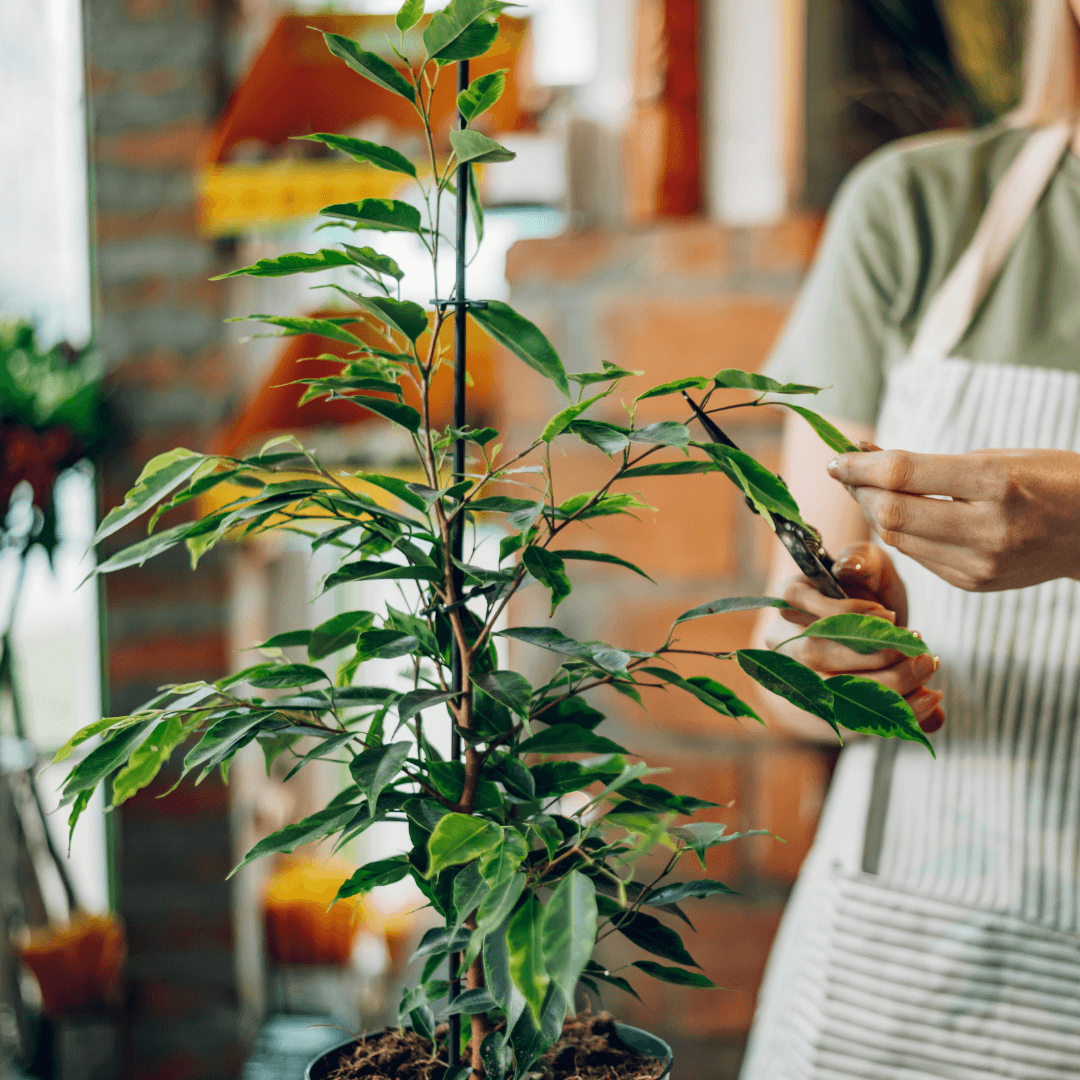
8. Pruning And Maintenance Of Asafoetida Plants
While the care regimen for Asafoetida is generally low-maintenance, it does involve attentive pruning and maintenance to ensure the plant's health and vigour.
Unlike many other herbs that may require frequent pruning to encourage growth, Asafoetida typically does not demand such regular intervention.
However, the importance of periodic inspections cannot be overstated. These inspections are crucial for identifying and removing dead or damaged foliage, which can attract pests and diseases.
By eliminating these compromised parts of the plant, you maintain its aesthetic appeal and prevent the spread of potential issues that could affect its overall health.
Such proactive maintenance helps preserve the Asafoetida plant's energy, directing it toward the growth of healthy foliage and the development of its valuable resin.
It’s a simple yet effective practice that underscores the principle of preventive care in gardening.
Keeping the Asafoetida plant free from unnecessary stress by removing unhealthy foliage ensures a thriving growth environment, fostering a robust plant capable of withstanding the challenges it may face throughout its growth cycle.

9. Harvesting Of Asafoetida
Patience is key when growing Asafoetida in containers. It takes about four to five years for the plant to mature enough to produce the prized resin through a careful harvesting process.
This lengthy growth period is necessary for the Asafoetida plant to develop a sufficiently large and robust root system, which is essential for sap production.
The harvesting process is somewhat intricate, involving careful incisions into the stems and roots of the mature plant to tap into the sap—a milky substance that, once exposed to air, solidifies into the resin known as asafoetida.
This extraction method requires precision to ensure that the plant is not harmed beyond its capacity to recover, allowing for future harvests.
Once dried, the resin is used as a potent spice in culinary dishes and for its medicinal properties.
Given the time and effort invested in reaching the harvesting stage, the yield of asafoetida resin is especially valued, making it a rewarding endeavour for those who cultivate this unique plant.
The process from planting to harvest underscores a deep connection to the cycles of nature and the rewards of dedicated gardening.
Conclusion
Growing Asafoetida transcends the ordinary, merging culinary exploration with ancient herbal wisdom.
The journey to grow Asafoetida in containers is a harmonious blend of patience, care, and ancient wisdom, culminating in a spice that enriches cuisine and health.
The process yields a spice revered across cuisines. It enhances your gardening experience, making growing Asafoetida in containers a testament to the harmony between human care and nature's resilience.
The journey from seed to spice is a slow dance with nature, paced by the seasons and guided by the gardener's hand.
As the Asafoetida plant quietly thrives, it symbolizes the garden's connection to a wider, more ancient world of traditional healing and culinary magic.
This venture, though measured in years, rewards not just with the spice's potent flavour but with the deep satisfaction of cultivating something truly unique.
Thus, growing Asafoetida in containers is about gardening and participating in a living heritage, bringing an echo of the Silk Road to your doorstep.
I trust you enjoyed this article on the Best Tips To Grow Asafoetida In Containers. Please stay tuned for more blog posts soon. Take care!
JeannetteZ
>>>Please click here to read my all-inclusive article about Container Gardening<<<
>>>Are you interested in homegrown herbs and medicine? Please click here to find out more about it!<<<
Your Opinion Is Important To Me
Do you have thoughts, ideas, or questions? I would love to hear from you. Please leave me your questions, experiences, and remarks about this Best Tips To Grow Asafoetida In Containers article in the comments section below. You can also reach me by email at Jeannette@Close-To-Nature.org.
Disclosure
This post may contain affiliate links. As an Amazon Associate and other affiliate programs, I earn from qualifying purchases at no extra cost to you. Please read my full affiliate disclosure.
You might also enjoy these blog posts:
Best Tips To Grow Ajwain In Containers
Expert Tips On How To Plant Cumin Successfully
Best Tips To Grow Skullcap In Containers
Best Tips To Grow Tulips In Containers
Best Tips To Grow Snowdrops In Containers




